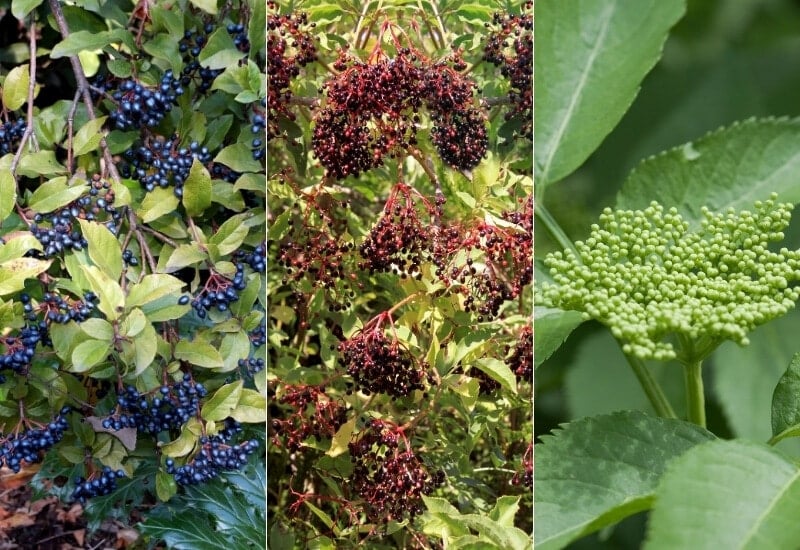
Gardeners often fail to add elderberry bushes to their garden, but these berries pack a punch. Not only do they taste delicious, but elderberries are known for their numerous medicinal properties.
Elderberries are versatile and productive; whether you choose to grow them for their ornamental qualities, a nectar sources for pollinating insects, or grow for edible fruit, elderberries are an excellent addition to your garden.
Elderberry (Sambucus) is a adaptable large shrubs or bushes native to many parts of the United States, growing freely along roadsides and wooded areas. Elderberries offer shade and protection to wildlife and tasty berries for foragers, wildlife, and bees.
Since they grow wild, rest assured knowing that these require little to no care. Before adding elderberry bushes to your property, consider which elderberry varieties you want to grow.
Each type has something unique; make sure you pick one that works best in your region.
Read on to learn about different types of elderberry plants and choose among the many varieties of elderberries suited to your region.
Types of Elderberries
Elderberry varieties are divided into two main types. It’s essential to know each of these types so that you can pick the right one for your backyard.
American Elderberry – Sambucus Canadensis
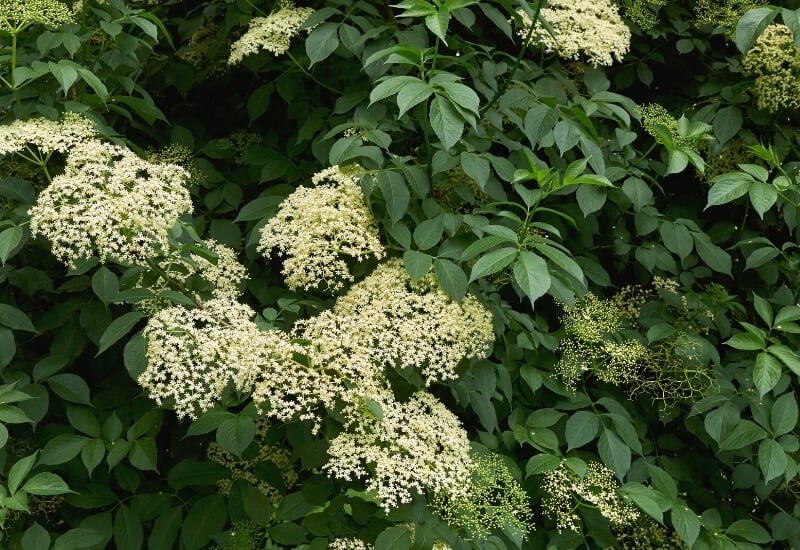
Sambucus canadensis, the American black elderberry, or common elderberry, is a species of elderberry native to Central America and North America.
This variety grows in fields and meadows throughout most continental states. This multi-stemmed, wide-spreading deciduous shrub grows between ten and 12 feet tall and is hardy in USDA zones three to eight.
When it comes to fruit production, this type produces more fruit, and the quality tends to be higher.
European Elderberry – Sambucus Nigra
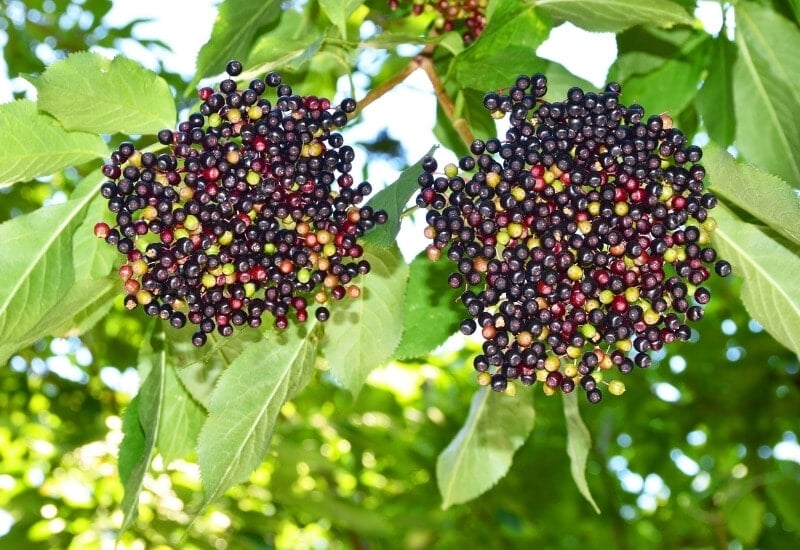
The European variety of elderberries grow slightly taller than the American variety, reaching up to 20 feet tall. They’re hardy in USDA zones four to eight.
Most people plant European elderberries because they’re ornamental with beautiful foliage. They do produce berries and, if you plant a second bush nearby, the harvest will be larger.
For best fruit production, plant two different elderberry varieties within 60 feet of each other for maximum fruit production.
Bushes begin to produce fruits in their second or third year of growth. Some elderberry varieties are self-fertile, but production is better with two or more bushes.
14 Best Elderberry Bush Varieties to Grow in Your Backyard
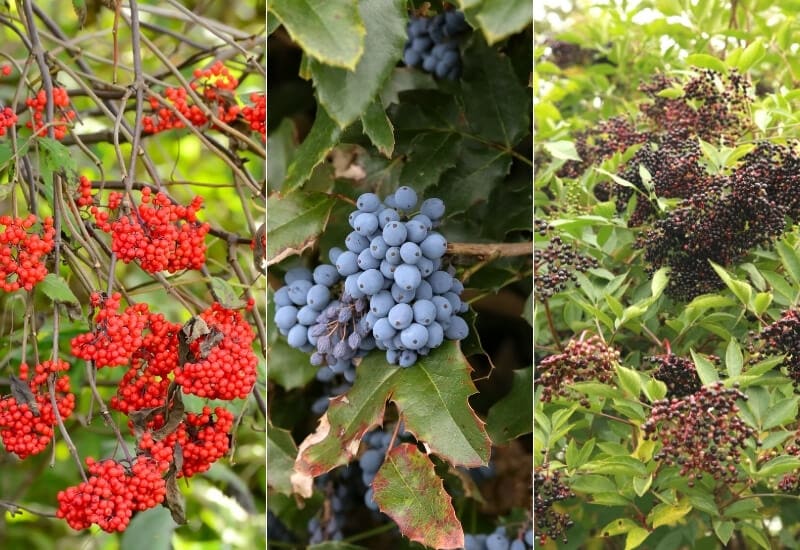
Whether you want elderberries to make pies and jellies or for their beauty, this list provides cultivars for everyone.
Here are 14 most common elderberry varieties to grow in your home garden.
1. Adams

Two of the best-known elderberry varieties are Adams #1 and Adams #2. Both produce large fruit clusters, ripening in early September and producing for several weeks.
Adams is the most common elderberry variety grown throughout North America, and it’s similar to the types that grow in the wild. These are easy to identify because of their signature white flowers and large clusters of deep, dark purple fruits. Not only is it easy to identify for fruit production, but it makes a beautiful ornamental plant.
Adams typically reach between six and ten feet tall, growing well in USDA zones three to nine.
2. Black Beauty
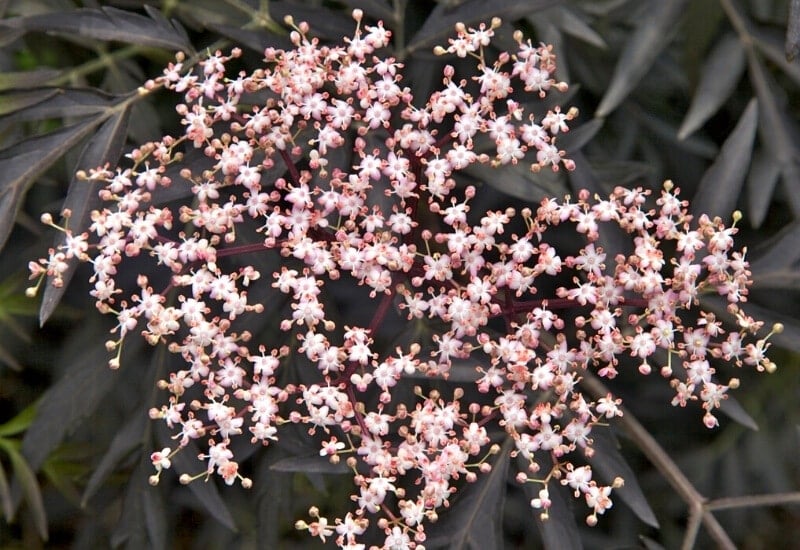
As the name suggests, this European elderberry variety is beautiful, chosen for its ornamental value. The plants produce purple foliage and pink, lemon-scented blossoms. These reach up to eight feet tall and wide, so prepare plenty of space for them.
‘Black Beauty’ grows well in USDA zones four to seven, preferring moist growing conditions. Unlike other varieties, these plants respond well to pruning.
You will need two bushes for proper cross-pollination if you want healthy berry production. These berries make delicious wines.
3. Black Lace
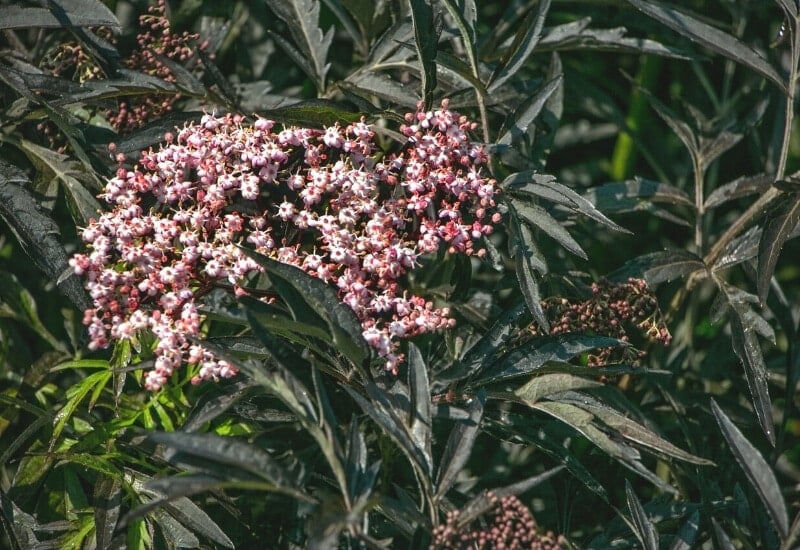
Here is another beautiful European cultivar that produces deeply serrated, purple foliage. These shrubs reach up to eight feet tall, producing pink flowers.
Some say that these look similar to a Japanese maple with the coloring. These plants are easy to prune to the height that works best for your landscape.
Compared to other European varieties, ‘Black Lace’ produces versatile berries. The shrub might be ideal for ornamental purposes, but it also produces delicious berries.
According to many gardeners, this variety seems to need more moisture than others, so if you receive a lot of rain, give ‘Black Lace’ a shot. Try growing this elderberry cultivar if you live in zones four to seven.
4. Blue
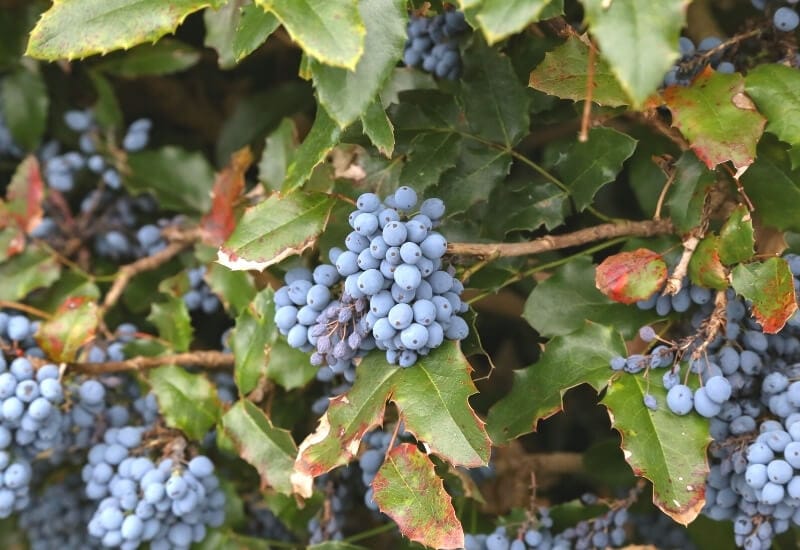
For those living in parts of the western United States, Mexico, or the West Coast, ‘Blue’ is an excellent elderberry variety to grow.
It produces large, powdery-blue berries that are easy to confuse with blueberries. Not only do the berries stand out, but these berries are known for having a rich flavor.
This variety is also different than the others because it grows best from seeds rather than a cutting. It prefers warm regions, suited to grow in USDA zones three through ten. When it reaches full maturity, the bushes can be ten to 30 feet tall, spreading 18 feet wide.
To say that ‘Blue’ elderberries are a large variety would be an understatement.
5. Bob Gordon
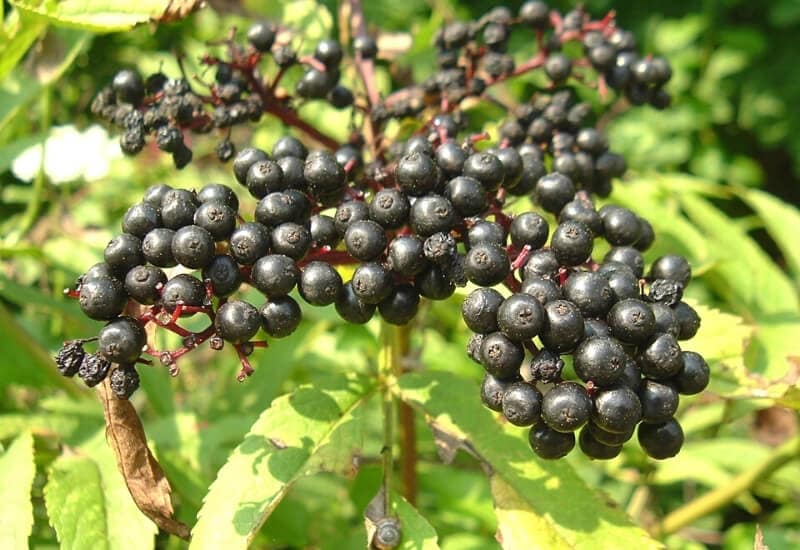
What a name for an elderberry variety, right? ‘Bob Gordon’ elderberry plants produce some of the best flavored and sweetest fruits. Some studies suggest that these are the heavist producing plants, and the berry clusters hang down, making it harder for birds to make these a snack.
These berries contain high levels of antioxidants, similar to cherries. The plants a heavy producers, growing elderberries that measure ¼-inch, perfect for pies, jams, syrup, and wine.
‘Bob Gordon’ ripens a bit later than some of the other varieties on the list, so if you live too far north, planting these might not be a good idea because you need plenty of sunlight to help the berries ripen. They grow best in zones four to nine.
6. European Red

Here is an imported European elderberry variety called ‘European Red’ because it produces cherry-red fruits in the fall rather than the typical purple.
The foliage on these plants is light green with a feathery looking, making it perfect for landscape designs. Since these plants produce large, beautiful flowers, it’s known for attracting plenty of pollinators, including butterflies.
When grown in ideal conditions, ‘European Red’ reaches up to 20 feet tall in USDA growing zones three to eight.
If you want elderberries to eat, stay away from this variety. Many experts urge caution when eating red elderberries, and their flavor tends to be pungent and bitter with an excess amount of seeds.
7. Johns
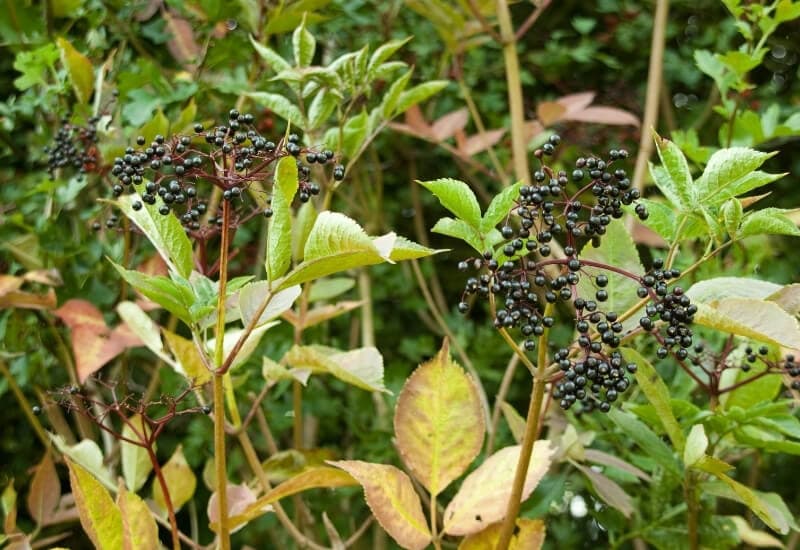
‘Johns’ is an early producing American elderberry shrub known for its prolific harvests. Many say that these berries are perfect for making jelly, and the plants are large. Expect each to reach up to 12 feet tall and wide with ten-foot canes.
These are low maintenance plants that require little to no spraying. The green foliage has a pretty gloss that makes it ornamental as well, and in the spring, giant clusters of white flowers appear all over the shrub.
By late summer, those white flowers change to deep purple, nearly black berries. If you live in zones three to nine, ‘Johns’ is an excellent elderberry variety to grow.
8. Lemon Lace
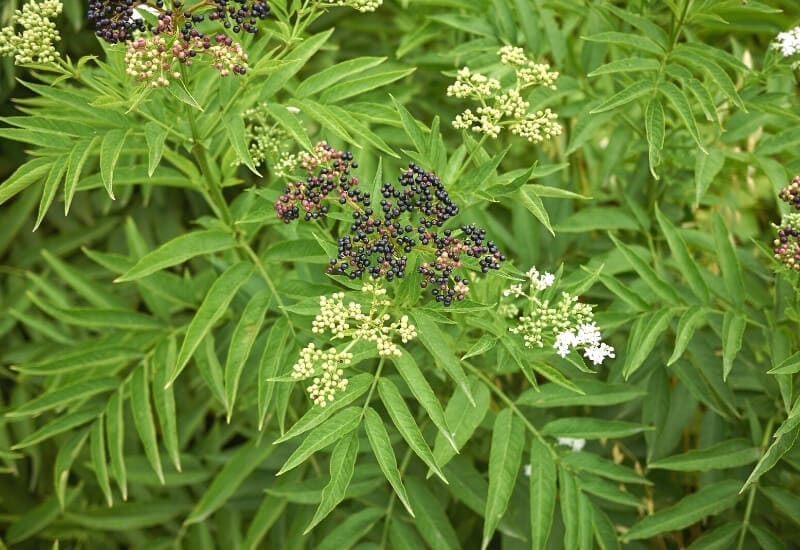
Sometimes called Lemony Lace, this is a showy, hardy variety that produces feathery, light-green colored leaves and red fruits in the fall. Before the red fruits appear, the plant features bunches of white flowers.
‘Lemon Lace’ is deer, cold, and wind-resistant, making it a hardy ornamental plant to grow. It grows well in full sunlight but handles partial shade if growing in southern states where the afternoon sun is harsh.
This is a smaller cultivar, only reaching a maximum height and width of three to five feet. Plant it if you live in USDA zones three to seven.
Note that ‘Lemon Lace’ also produces red fruits, and experts recommend that you don’t eat these berries.
9. Nova
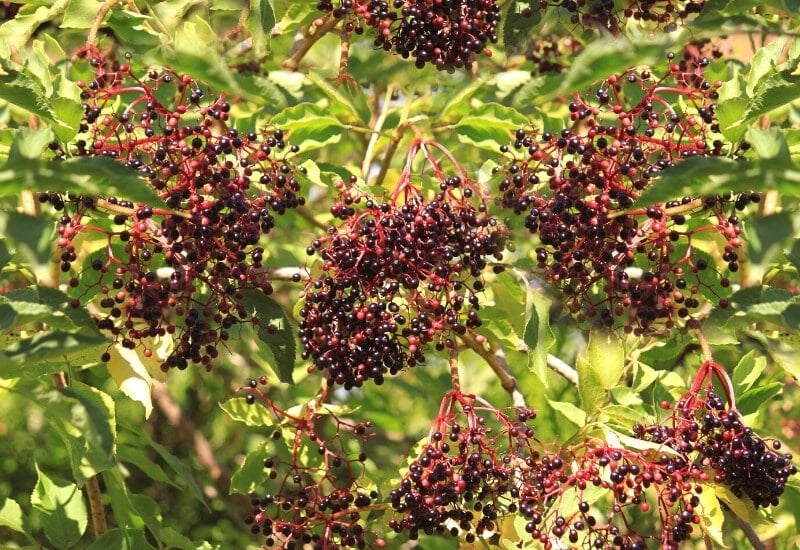
This is an American, self-fruiting elderberry variety that produces large, sweet fruits. Unlike some of the other types, Nova is smaller, only reaching six feet tall and wide. In the spring, the shrub fills with beautiful flowers, and by August, sweet berries replace the flowers.
Use ‘Nova’ berries for wine, pies, and jelly. In the spring, the flowers taste great when dipped in batter and turned into fritters.
While this plant is self-fruiting and doesn’t require another bush nearby, ‘Nova’ will thrive and produce a massive harvest when another American elderberry is nearby. It doesn’t have to be the same variety.
10. Ranch
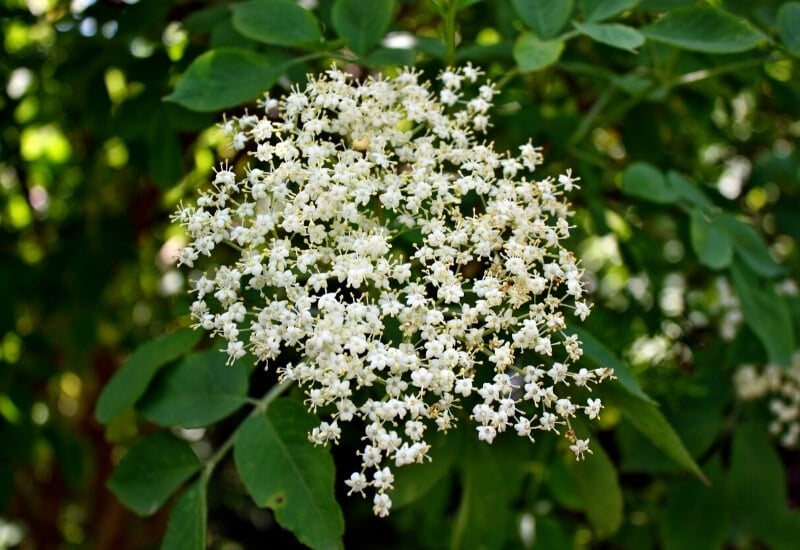
Here is a vigorous, heavy yielding elderberry variety that grows well in a range of conditions, including poor soils. If you have poor, non-fertile soil, ‘Ranch’ elderberry is the way to go. It’s the quickest to root from cuttings, growing strong, upright stems, and the bushes establish quickly.
Believe it or not, ‘Ranch’ elderberries were discovered at an old, abandoned homestead; it’s believed they originate from the 1800’s, and they quickly became a favorite.
The plants are strong and short in stature, growing five to six feet tall. Clusters of fruits appear in the middle to the top of the plant.
Expect these elderberry bushes to ripen slightly earlier than some of the other ones, but it’s still in the late ripening category.
So that means it’s not ideal for northern gardeners. It’s suggested for gardeners in hardiness zones four to nine.
11. Scotia
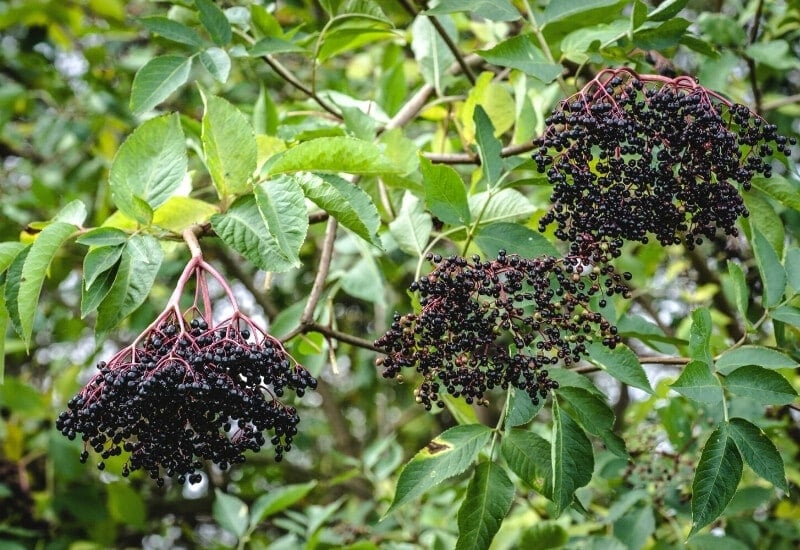
‘Scotia’ originated from Nova Scotia, hence the name, and making this a fantastic choice for Canadian gardeners. These are grown commercially throughout Canada.
This variety produces very sweet berries, perfect for making desserts and jellies. In fact, out of all the elderberry varieties, this one has the highest sugar content, making it perfect for culinary dishes. It also produces some of the smallest berries on vigorous bushes known for overproducing.
‘Scotia’ is a smaller bush than other types, so it’s better if you lack space on your property. The bush ripens early, typically in late July or early August. They grow well from zones three to nine.
12. Variegated
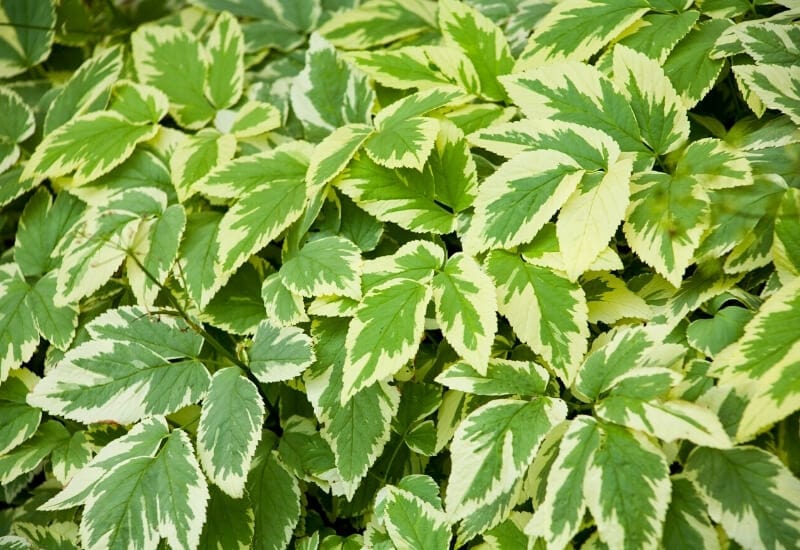
As the name suggests, ‘Variegated’ is a European elderberry variety with striking green and white foliage. These shrubs reach up to 12 feet tall, a real show stopper in your landscape.
This cultivar is grown for its beautiful foliage rather than berry production, but it does produce berries. Expect the harvests to be significantly smaller.
Use ‘Variegated’ elderberries as hedgerows or property markers. Their size allows them to block out unsightly views, while still producing edible berries.
If you plant a second ‘Variegated’ shrub nearby, the fruit production nearly doubles. This variety grows well in USDA zones four to nine.
13. Wydlewood
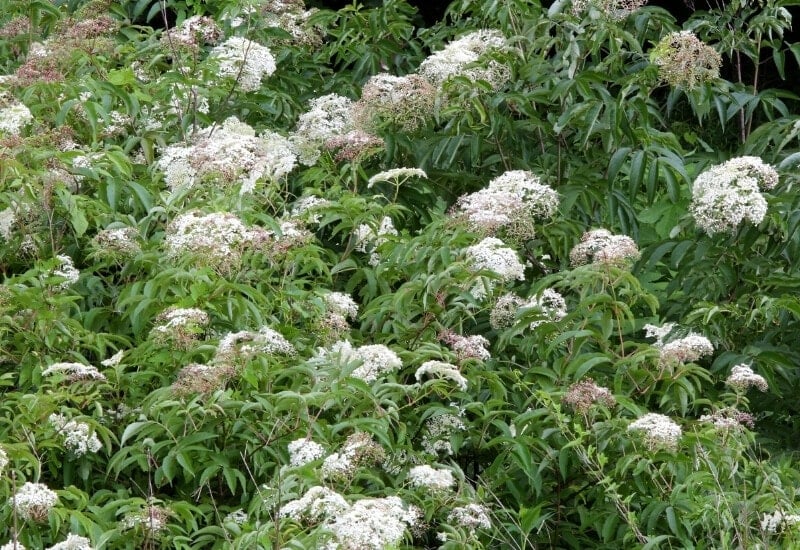
Those who live in the Midwest can enjoy this variety of elderberries called “Wydlewood.” It originates from Oklahome in the 1990s, created by Jack Millican.
‘Wydlewood’ is known for producing excellent harvests and berries with sweet, delicious flavors. The fruit set is dependable, so don’t worry about having bad years.
These shrubs are entirely indeterminate, which means they continue to produce flowers and berries until the frost stops the growth, sometime towards late fall to early winter. In some areas, flowers still appear in December.
‘Wydlewood’ is a late ripening variety, so it’s best to only grow these berries if you live in USDA zones four to nine.
14. York
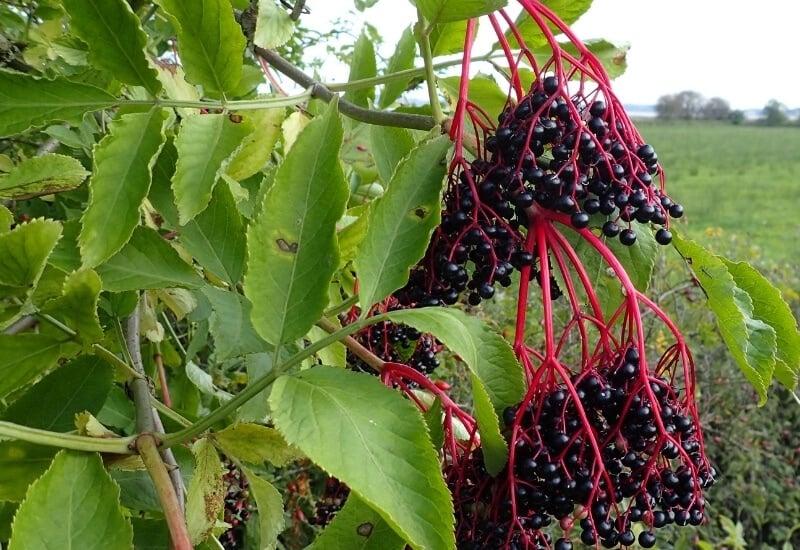
‘York’ is an American elderberry variety that produces the largest berries out of all the cultivars, and it pairs well with ‘Nova’ for pollinating purposes. This is a smaller bush, only reaching around six feet tall and wide, maturing late August.
‘York’ is one hardy variety, growing well in zones three to nine; it’s known for being cold-tolerant and handling heavy frosts like a champ.
Fall is the best time to see these plants, bringing plenty of color changes. The foliage changes to bright red before dropping for the winter. If you want to increase its yield, consider planting near an ‘Adams’ variety.
Final Thoughts
Who knew there were some many elderberry varieties? Not all varieties produce berries that are suggested to eat; remmeber to stay away from eating red berries.
American elderberries are best for eating, but European elderberry varieties produce plenty of berries for eating, especially when grown in groups with other elderberries.

Written By
Amber Noyes
Amber Noyes was born and raised in a suburban California town, San Mateo. She holds a master’s degree in horticulture from the University of California as well as a BS in Biology from the University of San Francisco. With experience working on an organic farm, water conservation research, farmers’ markets, and plant nursery, she understands what makes plants thrive and how we can better understand the connection between microclimate and plant health. When she’s not on the land, Amber loves informing people of new ideas/things related to gardening, especially organic gardening, houseplants, and growing plants in a small space.

Where is a reliable place to purchase Nova, Bob Gordon, Wydlewood & York?
I have Ranch and Adams 2. They are doing very well. I also have a ton native elderberry plants growing everywhere.
I have a farm where I’m trying to establish as many varieties as possible.
You can check starkbros may be they sell Nova.
I live and farm here in the San luis valley of Colorado. App 8000′ elevation. What varieties would you suggest to get started?